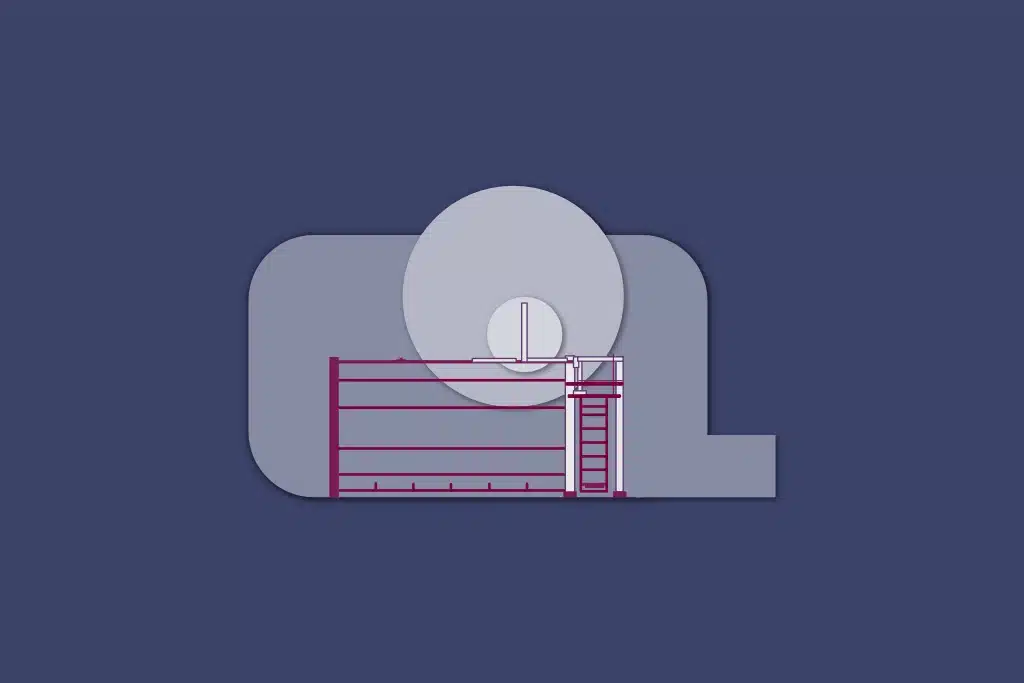Process safety tries to prevent major disasters, catastrophes, big fires, explosions and toxic releases. The problem with process safety, however, is that the risk of damage is ever-present. The history of companies that have had process safety disasters shows that there is enormous potential for businesses, of all sizes and in various industries, to be wiped out. Thankfully, catastrophic events occur infrequently, but effort and good process safety management are needed to ensure this.
Although it is a challenging task to undertake, process safety management and leadership are core aspects that businesses must focus on and manage well. These aspects should be used to develop a holistic process safety strategy that aims to reduce risk. However, the complexity of process safety and safety management is a big bag of string that needs untangling and drawing together for it to work.
Informed decisions and risk
Finding the level of risk in a process, especially if there is the potential for major incidents, should revolve around making informed decisions based on the level of risk identified.
To begin correctly implementing and supporting a process safety management strategy across an organisation, three essential questions must be answered.
1. Do we all understand what can go wrong?
This question should probe an understanding of what can happen if control of a process is lost. Will the outcome be an exceedingly small fire, or will it be an extremely large dust explosion? If we do not understand safety risks, we are not going to be able to manage the consequences or prevent them from happening again.
So, what are the possible repercussions of something going wrong for a process system? Once what could go wrong is known, the potential outcomes of the inadvertent events must be understood. This includes everything from minor injuries and equipment failure, all the way up to complete process shutdowns or loss of life. Once these risks and their consequences have been found and incorporated into a safety management system, safety parameters can be considered.
All is stressed because every single person in the business needs to understand what can go wrong. Although the CEO and business leaders will not need to know the technicalities of the process safety leadership team or operators, a good understanding of process risk is necessary.
2. What safety fallbacks are in place in our business to stop potential incidents from occurring?
Are there items of specialist safety equipment or processes that can manage various levels of risk? Are there relevant and effective means to use, store and handle flammable liquids or explosive dust? Are there suitable risk management procedures? Are there people and resources in place to find, check and respond to potential incidents? Is there solidified process safety management system in place? Do all employees have the necessary training and equipment to deal with an incident correctly?
3. How to know these protective measures are effective?
Are protective measures, if called upon, capable of stopping inadvertent events from escalating? Are employees correctly trained to use necessary protective equipment and do they have the ability to properly implement process safety procedures? Are safety measures checked and evaluated for effectiveness regularly?
The foundations for best practice
These questions form the foundations for process safety management best practices. They can and should be used when walking around the site and when talking to colleagues, managers and leaders. To implement effective process safety management and leadership, everyone in a business including the CEO, the board, senior leaders and operators must commit to embracing and measuring organisational culture and performance.
To support a process safety management system across an organisation, all three questions must be answered and put to review. Once these risks are understood, proper protective measures can be placed and measured, so inadvertent incidents do not occur.
Process safety legislation and the three core questions
Process safety leadership can be improved by delving into process safety legislation from a range of sources including the HSE, Energy Institute (UK), CCPS (Centre for Chemical Process Safety) and OSHA (USA). These guidelines aid in understanding and implementing answers to the three core questions.
Process safety legislation and guidance aim to supply a holistic understanding of the level of risk and how best to understand it. Hazard identification is key, because if we do not understand the hazard, then we will not be able to put in place measures to enforce the successful management of these hazards.
Hazard Identification and HAZOPs
Hazard identification is the first step in the completion of a thorough risk assessment, as it helps to find potential hazards that may occur during an operation or process. There are lots of techniques to identify hazards, with one of the main techniques being a HAZOP (hazard and operability study), alongside other hazard identification studies i.e. LOPA, HRA, and QRA.
Although companies will rarely decide to not undertake a HAZOP, they are not sufficiently executed. The HAZOP team must understand what they want to achieve, what the basic functionalities and more complex properties of the plant are, what hazards could occur and how big any incidents could be. This is termed extent and severity – how big is the problem and how much harm can it do?
Pre-HAZOP preparation
There is work that must be completed before a HAZOP study can start. This is where chemical reaction hazard assessments and other assessments should be undertaken to understand the potential risk. Although these issues are usually raised in a good HAZOP, without a solid foundation, it may be difficult to answer the specificities.
A HAZOP is done using 2D representations of processes in terms of processing and instrument diagrams (P&ID). Yet many businesses have gotten into the habit of not keeping their process and instrument diagrams up to date. If new storage tanks, hazardous chemicals or handling techniques have changed even minimally, they must be documented and discussed. If a plant changes size associated drawings must be updated accordingly. If the drawings are not updated, it could have a detrimental effect on the outputs of the HAZOP.
Practising Inherent Safety
There has been more emphasis placed on practising inherent safety which asks how we can work with lower inherent hazards.
Inherent safety – An example from the industry
A recent COMAH upper-tier client, supported by Sigma-HSE, conducted processes using a particular reactive chemical, which they had years of experience handling safely. However, the material is flammable, toxic and capable of resulting in major accident hazards. A request by a sister company was made to manufacture a new product using the existing technology and processes. This was easy for the site to achieve quickly as only a slight modification to the plant was needed.
However, when the regulators got involved, they asked questions. Are there any other synthetic routes to this product which may not involve substances capable of major accident hazards? Can we see a written justification within the management of change process? Were alternative processes considered?
As this business was not able to convince the regulator that they had gone through these risk assessment exercises thoroughly and because their management of change system did not prompt the employees to consider such questions, they eventually got into very deep water with the regulators. The regulators did not stop them from manufacturing the product, but trouble occurred because there was a lack of justification.
Businesses are lean and have a highly responsive attitude towards achieving client satisfaction. Although we might want to be able to satisfy our clients as quickly as possible, completing thorough HAZOPs, implementing holistic process safety management practices and putting processes through a management of change process must be done. But they are not quick actions.
Understanding what can go wrong
How do we know our process safety systems are robust enough? Once we understand what can go wrong, we can put in place measures to prevent, control and mitigate inadvertent incidents. These measures reduce the likelihood of irregular activities occurring.
Introducing controls and equipment
Although measures may reduce hazardous consequences, the primary control should be the reduction of event likelihood. Pressure relief valves and cooling systems are examples of critical steps within a procedure that must be correctly identified, controlled and managed. There should be tight enough control over processes that the safety-critical equipment does not operate, but if they are called upon, they prevent, control or mitigate.
Safety-critical equipment must be intelligently designed, constructed, installed, operated, inspected and maintained to form part of the process safety lifecycle. This is what process safety management systems are for, they remind us about the importance of looking after assets, permit to work systems and management of change systems. Process designs should follow what’s called ‘accepted good practice’ at a minimum.
Process hazard analysis
General minimum standard guidance from the regulators or standard practices across the process industries should be set and an organisational rule book must be created. The rule book must be updated and changed over time. Even if a HAZOP was recently undertaken, change requires another hazard identification exercise to be completed. This is normally called a process hazard analysis (PHA).
A PHA is completed to catch the things that were missed when the original HAZOP was completed. Although the HAZOP is a very robust and methodological approach, it is only as good as the people in the room and how fresh their minds are.
People often say that the PHAs are not of sufficient quality as there is a belief that because the plant’s been running for the past 20 or 30 years, nothing significant has changed. This has led the PHA to become a mere tick-box exercise. What internal process hazard analysis teams tend not to do, which is particularly important, is to ask themselves one question; if we were building this plant today, how different would it be?
So, when an organization undertakes a PHA, it is important to ask these questions:
What are the most significant changes that have taken place since the last HAZOP?
What is our updated understanding of how this particular process works and what could happen in different situations?
A PHA should be used not just as a safety check but as an input into continuous improvement programmes that should loop into the culture of the entire organisation.
Old, accepted practice?
There are pieces of old accepted good practices for dealing with toxic materials. For example, the bulk storage of hazardous materials in the open air for quick dispersal in case of a leak is no longer considered acceptable good practice.
In this particular case, an operation is not satisfying the law in the UK, and it is not satisfying the continuous improvement processes that should be present within a business.
How do we know these protective measures are effective?
So how is process safety performance measured? How is the organisation learning? How is the business learning to improve?
Businesses can look at performance measurement via the following methods:
· Historical trends (looking at how often particular events or problems have occurred)
· Process hazards analysis (documenting all potential accidents and their causes)
· Critical control points checking (tracking the state of specific equipment or processes at defined intervals)
Process safety leadership and responsibility
The most effective performance measurement system that should be implemented in any process industry is the leadership and senior process safety management teams. Process safety requires more than simply following legislative requirements, it requires organisations to continuously improve. This is a core value for any business; if a business does not continuously improve, it will not be sustainable.
Process safety management is not just engineering, it should be viewed as the optimal point between engineering and management. Both of these elements have one thing in common, they all need human impact, and this is set by the leadership.
For the leadership to be effective, they have got to understand what can go wrong. They have got to understand what measures are in place. They have got to understand what performance monitoring data supplies and act accordingly. This is why there is such a big push for leadership in the process safety industry as leaders must be direct safety practitioners.
Process safety leadership vs business leadership
If the business leadership or board are not interested and if there is not clearly positive leadership attached to process safety, then our behaviours as employees working will be affected negatively. There must be a commitment to do things right, and there has to be a level of involvement to convince all employees that process safety is important.
By utilising graphs and trends in process safety incidents over time, process safety management teams can find patterns that might show when improvements may be necessary on their part.
Leaders must be committed to process safety and risks must be fully understood so proper protective measures are put in place, so incidents do not occur. Protecting people, workplaces, businesses, and the environment depends on the awareness and maintenance of holistic process safety practices and culture across an organisation.
Conclusion
There is extraordinarily little new in process safety. Events happen, investigations occur, and root causes are discovered, but there is little new that comes out of it. Even still, we must understand what can go wrong.
Answering these three questions is fundamental for creating and supporting an effective process safety management program across an organisation. As we create, check and update answers to these questions, it will allow organisations to decide whether current process safety strategies and safety management systems are acceptable, whether protective measures are effective and if there are any areas where further improvement (in continual improvement mode) is needed.
Sigma-HSE offers a comprehensive range of process safety consultancy and training solutions. Our team of engineers, technical experts and process safety leaders are on hand to discuss your requirements and will collaborate with you to supply actionable process solutions that are both cost and time effective.



